If you’re looking for a precise and efficient way to capture 3D images and measurements, a 3D laser scanner may be just what you need. With so many options on the market, it can be overwhelming to choose the best one for your needs. There are a few factors to consider before making your purchase.
Firstly, think about the size and complexity of the objects you’ll be scanning. Some 3D laser scanners are better suited for larger objects, while others are more precise for smaller, intricate details. Secondly, consider the speed of the scanner and how much time you have to dedicate to scanning. Some scanners can capture images quickly, while others may require more time and attention. Finally, think about the level of accuracy you need in your measurements. Some scanners offer greater precision than others.
If you’re in the market for a 3D laser scanner, you’re likely searching for a tool that is reliable, efficient, and precise. Have you found yourself asking, “What is the best 3D laser scanner for my needs?” Or, “Which scanner will provide the most accurate measurements?” By considering the factors above and doing your research on the available options, you can find the ideal scanner to meet your needs. Keep reading to learn more about the top 3D laser scanners on the market and how they stack up in terms of accuracy, speed, and precision.
10 Best 3D Laser Scanner
| # | Product Image | Product Name | Product Notes | Check Price |
|---|---|---|---|---|
|
1
|
It is ideal for use with 3D scanners to improve accuracy and speed of scanning and optical tracking.
|
|
||
|
2
|
Ideal for robot navigation and obstacle avoidance with its accurate 3D scanning capabilities.
|
|
||
|
3
|
Revopoint 3D Scanner is ideal for 3D printing, providing high precision and fast scanning in a portable device.
|
|
||
|
4
|
The product is ideal for creating precise 3D models for 3D printing with its high resolution and portable design.
|
|
||
|
5
|
The product is ideal for creating 3D scans of objects using advanced laser scanning technology and injection molded plastic parts.
|
|
||
|
6
|
The product is ideal for creating high-precision 3D models and prototypes with fast scanning speeds and versatile use modes.
|
|
||
|
7
|
It is ideal for creating 3D models and scanning objects with a wide fan angle of 60 degrees.
|
|
||
|
8
|
The product is ideal for creating accurate and detailed 3D scans of objects for use with 3D printers.
|
|
||
|
9
|
It is ideal for creating accurate 3D scans of desktop objects using white light technology.
|
|
||
|
10
|
The product is ideal for creating high-quality 3D scans and designs using a handheld scanner and specialized CAD software.
|
|
1. Tosukki 3d Scan Marker Set – 1200 Pack
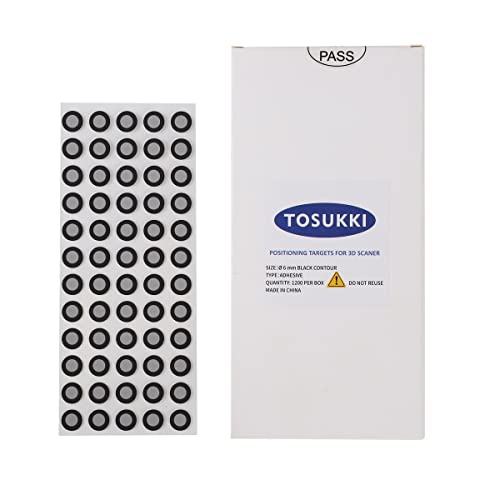
This box of 1200 adhesive Type positioning targets is a must-have for anyone in need of high-precision 3D scanning operations. With a diameter of Ø6 mm, these targets are perfectly compatible with handheld 3D scanners, including models from Creaform (All Handyscan/Go!scan/Academia/Peel 3D), ZEISS (T-SCAN hawk), Shining 3D (EinScan H/EinScan HX/EinScan Pro/FreeScan), HEXAGON, and many other brands.
Additionally, these targets are also compatible with most brands of 3D scanners and optical trackers that use 6mm positioning targets, which have an internal circle diameter of 6mm. This includes handheld 3D scanners that use red/blue laser and white LED technology, fixed 3D scanners that use white/blue-LED technology, and various optical trackers.
These adhesive Type positioning targets are ideal for a range of applications, including 3D scanning, reverse engineering, metrology, inspection, and many other scenes. They have been tested and used by users in a variety of industries, including automotive, aerospace, mechanical, manufacturing, power generation, electronics application, and educational fields.
2. Yahboom Lidar Scanner – 3d Navigation Tool
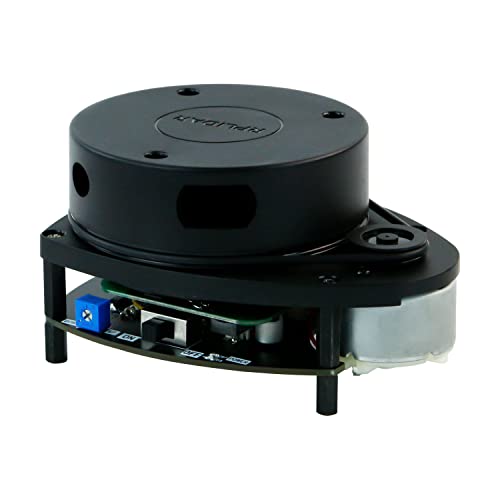
Introducing the SLAM Lidar Series – the full range of Silan lidar products, including RPLIDAR A1/A2/A3/S1/S2/M2, comes with a gift of ROS robot information and professional technical support.
When selecting a version, consider whether you'll be using the lidar indoors or outdoors and whether you prefer triangular ranging or TOF ranging. The measurement frequency ranges from 8000 times/s to 32000 times/s, while the scanning frequency ranges from 10Hz to 20Hz. Choose the corresponding lidar that best fits your needs.
Safety is a top priority, and the RPLIDAR radar features a ranging core that rotates clockwise to achieve 360-degree omni-directional scanning and ranging detection of the surrounding environment. This provides a contour map of the surrounding environment. The low-power infrared laser used as the emitting light source meets safety standards for Class 1 lasers and ensures human eye safety.
The SLAM Lidar Series features a no-brush motor, which has been self-designed and eliminates the need for belt drive in the first generation. This reduces mechanical friction during operation, resulting in smooth operation and almost no noise.
This lidar series has a wide range of applications, including service robot navigation and obstacle avoidance, AGV vehicle obstacle detection and avoidance, parking space detection, multi-touch and large screen interaction, environmental scanning and 3D reconstruction, and drone mapping and obstacle avoidance.
For those using ROS1 and ROS2, the SLAM Lidar Series has full support, making it easy to integrate into existing projects.
Choose the SLAM Lidar Series for a safe, reliable, and versatile lidar solution that meets your specific needs.
3. Revopoint Pop2: High-Precision Portable 3d Scanner
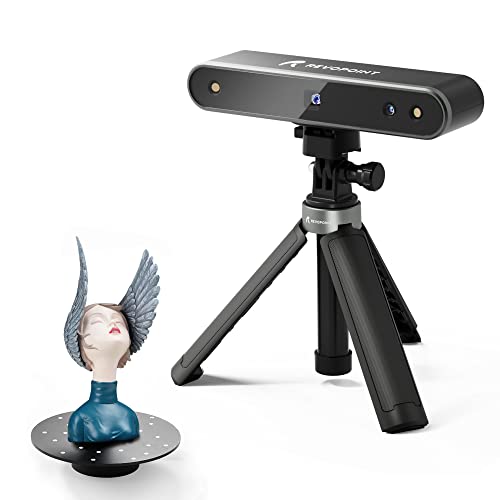
The POP 2 3D Scanner is a powerful, high-precision scanning tool that is perfect for a variety of applications. With a core hardware design that combines binocular and micro-structured light principles, this scanner can capture 3D point cloud data with incredible accuracy. The highest single-frame precision can reach an impressive 0.05mm, making it ideal for projects that require a high level of precision.
One of the standout features of the POP 2 3D Scanner is its high compatibility and ease of use. It supports scanning on a variety of devices, including Windows8/10/11, macOS, Android, iOS, and Harmony OS. The updated REVO SCAN software is user-friendly and easy to navigate, making it perfect for both new and experienced users alike. Additionally, the 3D models scanned by the POP 2 can be directly processed in popular design software like Maya, 3D Max, Tinker CAD, UG NX, MeshLab, Solid Edge, SketchUp, Fusion 360, unity 3D, Rhino, Cura, Cinma 4D, Blender, Solidworks, and Keyshot.
Another great feature of the POP 2 3D Scanner is its portability. The scanner is lightweight, weighing in at only 195 grams, and does not require an AC power supply. Instead, it can be directly connected to a smartphone or tablet for 3D scanning. This makes it perfect for handheld scanning and on-the-go applications.
The POP 2 3D Scanner also includes upgraded hardware, including higher resolution cameras and projector, which allows for quick and efficient 3D point cloud data acquisition at 10 frames per second. The embedded 6 Dof Gyroscope facilitates smoother operation, making it easier to scan objects more fluently. The scanner supports feature, marker, and color alignment and can directly generate vivid 3D models for 3D design, 3D animation, and 3D printing.
With its upgraded features and high precision, the POP 2 3D Scanner is ideal for a variety of applications. It can help users easily capture 3D models for 3D printing, 3D design, VR/AR 3D modeling, reverse engineering, and measurement. Overall, the POP 2 3D Scanner is a powerful and versatile tool that can help users achieve their 3D scanning goals with ease.
4. Revopoint Pop2: Precision 3d Printing Scanner
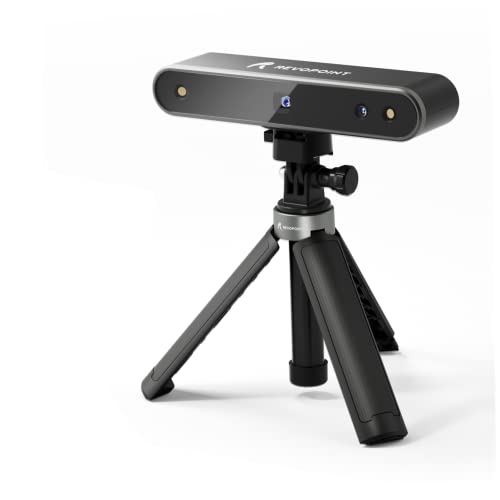
The POP 2 3D Scanner is a high-precision device that can capture 3D point cloud data with a single-frame precision of up to 0.05mm. It uses a binocular and micro-structured light principle, along with a proprietary micro projecting chip, to ensure accurate and fast data acquisition. The scanner also supports high-precision scanning mode and texture scanning mode, allowing for the direct generation of vivid 3D models for color 3D printing.
This 3D scanner is highly compatible and easy to use, supporting scanning on various devices, including Windows8/10/11, macOS, Android, iOS, and HarmonyOS. It comes with updated REVO SCAN software, which features a new, easy way to scan, making it perfect for new users. The 3D models scanned by POP 2 can be directly processed in various design software, such as Maya, 3D Max, Tinker CAD, UG NX, MeshLab, Solid Edge, SketchUp, Fusion 360, unity 3D, Rhino, Cura, Cinma 4D, Blender, Solidworks, Keyshot.
The POP 2 3D Scanner is also highly portable, weighing only 195 grams, and comes with a cable that combines the power cord and data transmission function, eliminating the need for an AC power supply. It can be directly connected to a smartphone or tablet for 3D scanning, making it convenient for handheld scanning.
The scanner's hardware has been upgraded with higher resolution cameras and projectors, enabling it to quickly obtain high-precision 3D point cloud data at 10 frames per second. It is also enhanced by an embedded 6 Dof Gyroscope, facilitating smoother and more fluent scans. The POP 2 3D Scanner supports feature, marker, and color alignment, allowing for the direct generation of vivid 3D models for 3D design, 3D animation, and 3D printing.
With its upgraded features, including higher precision, smoother operation, and better color effect, the POP 2 3D Scanner is the perfect tool for capturing 3D models for 3D printing, 3D design, VR/AR 3D modeling, reverse engineering, and measurement, among other applications.
5. He3d Diy 3d Scanner Kit – Laser & Plastics
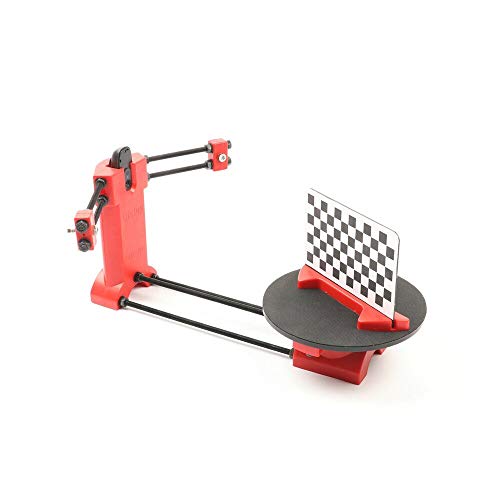
The open source 3D scanner for 3D printing is a fantastic addition to any enthusiast's toolkit. This scanner is completely open source, which means that you can access all of the software for free. After you place your order, the seller will send you detailed instructions and software via Amazon BUYER MESSAGES. If you need any assistance after purchase, the seller also provides after-sale service on the platform.
One of the best features of this scanner is that it is incredibly easy to assemble and use. The kit comes with all of the necessary parts to get started, so you don't have to worry about hunting them down yourself. The injection-molded red plastic parts are not only aesthetically pleasing, but they also ensure that the scanner is precise and accurate.
The kit comes with all of the necessary components, making it a full kit, unlike other scanners that require additional purchases. This scanner is unique in that it includes injection-molded red plastic parts. This ensures that the scanner is not only aesthetically pleasing but also accurate and precise. You won't have to worry about problems caused by imprecise sizing.
Finally, the scanner has been upgraded to a new integrated motherboard. This upgrade ensures that the scanner runs smoothly and efficiently, providing you with accurate 3D scans every time. Overall, this open source 3D scanner for 3D printing is a great investment for anyone looking to take their 3D printing to the next level.
6. Lizard 3d Scanner For High Precision Printing.
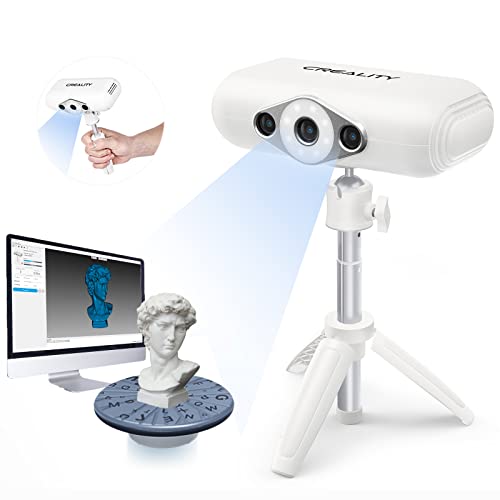
The CR-Scan Lizard is a professional-grade 3D scanner that boasts an impressive accuracy of up to 0.05mm. Its binocular design allows it to capture even the finest details of small parts, black objects, and 3D prototypes with deep, hard-to-reach features. It supports both geometry scanning mode and texture scanning mode, making it a highly versatile tool for various scanning circumstances and requirements.
One of the standout features of the CR-Scan Lizard is its no-marker scanning capability, which eliminates the need to stick markers for any mode. This not only saves time but also makes the scanning process more efficient and user-friendly. The kit includes a tripod and turntable, and the scanner supports three scanning modes, making it suitable for scanning objects of different sizes.
The CR-Scan Lizard is also highly adaptable to different environments. It has better material adaptability and can scan black objects, giving users unlimited creativity. It maintains excellent performance even in bright sunlight, thanks to its multi-spectral optical technology. Additionally, the scanner is equipped with a flash that allows for adjustable brightness in dimmed environments.
Using the CR-Scan Lizard is incredibly easy, both for the software and the scanner. The CR Studio software is integrated with 3D complete automation algorithms that enable model optimization with just one click. It supports multi-positional auto-alignment, auto-noise removal, auto-model simplified topology, auto-hole filling, and auto-texture mapping, impressing users with its ease of use. The software also supports OTA online updates for free, ensuring that users always have access to the latest features.
7. Quarton Economical 3d-Scanner Line Laser Module Vlm-650-41 Lpt30-D60 (Fan Angle : 60°)
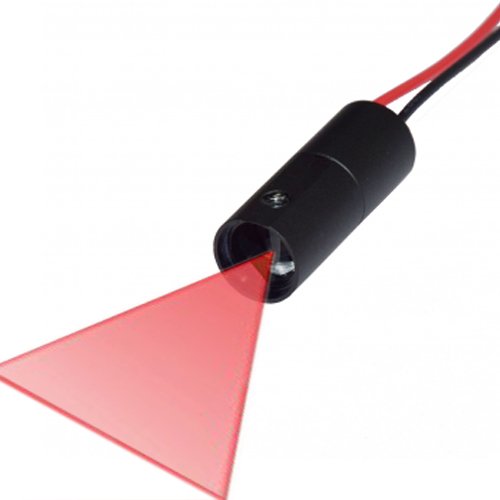
Introducing the Economical 3D-Scan Red Line Laser, a versatile and reliable tool for a variety of scanning and measurement tasks. Designed with precision in mind, this laser boasts a high contrast Gaussian line profile that ensures accurate measurements every time. With a line thickness of less than 1.2mm (60° type), and a working range of 50mm to 400mm, you can be sure that every detail will be captured with clarity and precision.
This laser module is equipped with an integrated quartz cylindrical lens, collimating lens, laser diode, and APC driver circuit, making it a comprehensive solution for all your scanning needs. The APC circuit ensures maximum stable laser output power, ensuring consistent and reliable results every time.
Whether you're a professional engineer, a hobbyist, or a DIY enthusiast, the Economical 3D-Scan Red Line Laser is the perfect tool for your needs. With its compact, lightweight design and easy-to-use interface, this laser is both practical and user-friendly. So why wait? Invest in the Economical 3D-Scan Red Line Laser today, and take your scanning and measurement capabilities to the next level!
8. Creality Lizard 3d Scanner: High-Performance Precision Scanning
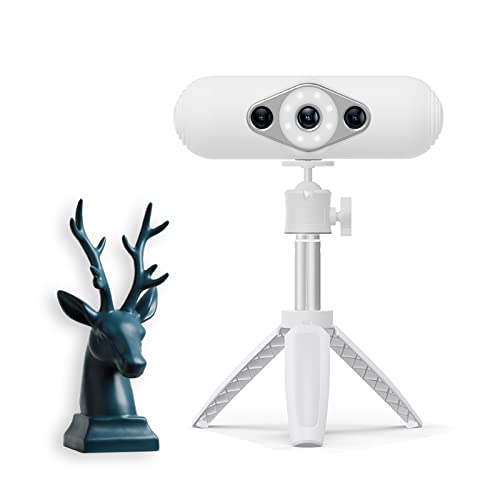
The Creality CR-Scan Lizard 3D scanner is an excellent choice for novices, hobbyists, and professionals who want to experience the fun of quick scanning, thanks to its 0.05mm accuracy and no-marker scanning feature. With the upgraded dual-camera system, it supports the reproduction of high-precision objects or human bodies. Unlike other scanners, there is no need to stick markers or manual calibration data. The scanner scans automatically at a speed of 10 frames per second and successfully obtains the spatial coordinates of the model with an accuracy of 0.05mm.
The Creality CR-Scan Lizard 3D scanner has a binocular global exposure camera and multi-spectral technology that improves the scan effect. The two cameras use different spectrums with the self-developed multi-spectral optomechanical, which not only improves the accuracy of the scanning but also improves the optical adaptability. This means that even black objects and outdoor targets can be easily scanned, even in direct sunlight.
With multiple scan modes available, the scanner can be installed on a tripod, and the model can be placed on the turntable. After the turntable rotates 360°, the scanner captures the spatial coordinates of the model and keeps improving the detail. Alternatively, the scanner can be held to scan the details of big parts more flexibly, such as engine hoods, car doors, front or rear bumpers, and much more. The recommended work distance is 6-16 inches (15-40cm).
The CR-Scan Lizard is compatible with Windows10 64 bit and Mac OS systems and can generate 3D models with a single click. After automatic filling and repairing, substrate recognition, non-destructive mesh simplification, smoothing, and denoising, it generates fine and complete 3D scan files that can be exported to STL or OBJ file format, compatible with FDM and light curing 3D printers.
The CR-Scan Lizard highly restores 24-bit true color and supports color printing. This simplifies the modeling process of customization and innovative design, making it widely used in medical equipment, art education, architectural engineering, industrial manufacturing, and design. Whether for personal or professional use, the Creality CR-Scan Lizard 3D scanner is an excellent choice for anyone looking for high-quality and reliable 3D scanning.
9. Precisionscan: Sol Pro 3d Scanner
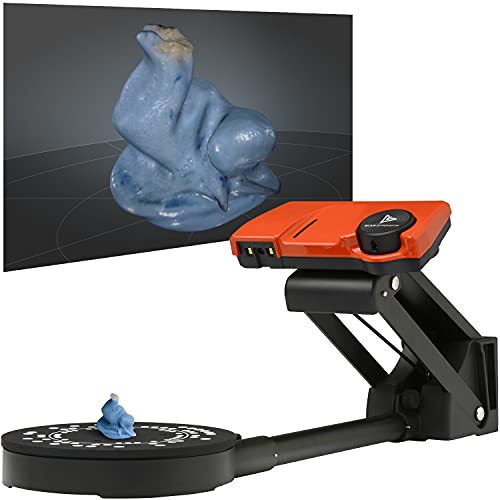
The SOL PRO 3D scanner is a technological marvel that utilizes a unique combination of white light technology, laser triangulation, and a special calibration process to achieve an impressive 0.05 mm accuracy with texture feature. The camera captures the texture of the object, while the laser collects its geometry. The turntable can support a maximum weight of 4.4 lbs (2 Kg), and the near and far scanning modes allow for highly detailed scans.
The SOL PRO 3D scanner is one of the most accurate 3D desktop scanners available on the market, making it an excellent tool for quality assurance, product inspection, or 3D printing tasks. The scanner seamlessly integrates into your 3D workflow, and its precision and quality make it a perfect partner for your projects. With only four pieces that attach with thumb screws, the scanner is incredibly easy to set up. The software is intuitive, and there is no need to manually mesh alignments.
The Scan Dimension engineering team has worked tirelessly to make the entire scanning process seamless. The scanner is incredibly easy to use, and to start a scan, users simply need to place an object on the turntable, place it within the included tent, and press a button. The laser, camera, and software do the rest. Users can rescan objects from different angles to ensure all geometry and texture is collected, and the software will mesh it together.
Scan Dimension is a division of Global Scanning, a Danish-based technology firm with about 30 years of experience in the image-capturing sector. The collective experience of Scan Dimension and Global Scanning is behind the engineering of SOL and SOL PRO, which were designed to be portable, affordable, easy to use, and precise.
The SOL PRO 3D scanner package includes the scanner itself, a turntable, a scanner stand, a black-out tent with enclosure, USB 3.0 cables, and a target for high-precision enabling. With its innovative technology, seamless usability, and experienced engineering, the SOL PRO 3D scanner is an excellent tool for anyone in need of precise 3D scanning.
10. Hybrid Handheld 3d Scanner With Cad Software
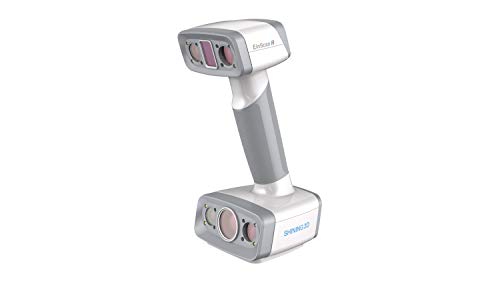
The EinScan H 3D Scanner is a cutting-edge device that utilizes hybrid structure light source technology to integrate LED structured light and invisible infrared light into one device, making 3D scanning possible in a wide range of applications. With advanced smart presetting in different scan modes, it is an ideal tool for portable 3D scanning technology.
The scanner's invisible infrared light source provides a reliable solution to the challenge of acquiring dark-colored objects and enables easy acquisition of human hair. The new face scanning mode adopts invisible infrared light, enabling a safe and comfortable scanning process.
This scanner is perfect for scanning objects that are over 11 inches in size. The built-in color camera supports full-color texture capturing and tracking by texture, making it the best 3D scanning application for human body scanning, animal scanning, furniture scanning, artwork scanning, forensics, digital entertainment, healthcare, and customization.
The EinScan H 3D Scanner boasts impressive high resolution, reaching 0.25 mm. It captures the full geometry of objects such as artwork or furniture with fine details. The high accuracy of scanned data, up to 0.05 mm, and volumetric accuracy of 0.1mm/m improves the precision of 3D modeling in a dense points cloud or polygon meshes.
This product is sold and shipped proudly by UMAX, the official U.S. authorized distributor of Shining 3D EinScan Products. The scanner comes with free global warranty by Shining 3D, giving customers peace of mind when purchasing this innovative product.
Best 3D Laser Scanner FAQs
Are there any 3D laser scanners that can capture color data?
Yes, there are 3D laser scanners that can capture color data. These scanners are equipped with cameras that capture color information alongside the laser scanning process. This technology is known as photogrammetry, which combines the 3D laser scanning with high-resolution photography to capture the color of the object being scanned. The resulting data is a 3D model that includes both geometry and color information. This type of scanner is commonly used in the entertainment industry for creating digital versions of actors or objects for use in movies and video games. It is also used in fields such as archaeology and architecture to create accurate 3D models of historical or architectural sites with realistic color detail. Some popular 3D laser scanners that can capture color data include the Artec Eva, Creaform HandySCAN 3D, and Faro Focus3D.
Are there any portable 3D laser scanners available?
Yes, there are portable 3D laser scanners available in the market. Portable 3D laser scanners are handheld devices that are easy to carry and can be used to scan objects of different sizes and shapes. These scanners use laser light to capture the geometry of an object and create a 3D model of it. Some popular portable 3D laser scanners include the Artec Eva, the FARO Focus3D, the Creaform HandySCAN, and the Trimble TX8. These scanners are widely used in industries like manufacturing, architecture, and healthcare for inspection, quality control, and documentation purposes. Portable 3D laser scanners are preferred over stationary scanners because they are more versatile, can be used in the field, and are much more affordable. They are an excellent tool for anyone who needs to capture accurate 3D data quickly and efficiently.
Can 3D laser scanners be used for industrial applications?
Yes, 3D laser scanners can be used for industrial applications. In fact, they have become an increasingly popular tool in various industrial settings such as manufacturing, construction, and engineering. 3D laser scanners can accurately capture and create a digital representation of physical objects and environments, allowing for precise measurements, analysis, and modeling. This technology can be used for tasks such as quality control, inspection, reverse engineering, and design. In manufacturing, 3D laser scanners can be used to inspect and measure parts, compare them to CAD models, and identify any discrepancies. In construction, they can be used to capture as-built conditions, monitor progress, and detect any potential issues. In engineering, 3D laser scanners can be used for site planning, infrastructure design, and asset management. Overall, 3D laser scanners are a valuable tool for industrial applications, allowing for efficient and accurate data collection and analysis.
Can 3D laser scanners be used for scanning large objects or outdoor environments?
Yes, 3D laser scanners can be used for scanning large objects or outdoor environments. In fact, 3D laser scanners are often utilized for large-scale projects such as mapping and surveying of buildings, bridges, and other structures. They can also be used for scanning outdoor environments such as terrain, forests, and archaeological sites.
One of the benefits of 3D laser scanners is their ability to capture precise measurements and details of an object or environment. This is achieved by emitting a laser beam that bounces back and is recorded by the scanner, creating a point cloud of data that can be used to create 3D models or maps.
However, it is important to note that the size and range of a 3D laser scanner can vary, and some models may not be suitable for scanning extremely large objects or environments. It is important to research and select a scanner that is appropriate for the specific project requirements.
How do 3D laser scanners compare to other 3D scanning technologies?
3D laser scanners are one of the most widely used and popular 3D scanning technologies available today. They are known for their ability to capture highly accurate and detailed 3D data quickly and efficiently. Compared to other 3D scanning technologies, such as structured light or photogrammetry, 3D laser scanners are typically faster and more accurate. This is because they use a laser beam to scan the object and measure the distance between the scanner and the object's surface. This process is known as Time-of-Flight (TOF) scanning and can capture millions of points per second.
In addition, 3D laser scanners are also able to capture data from a greater distance and can work in a wider range of lighting conditions, making them ideal for outdoor or industrial environments. However, they may struggle with reflective or transparent surfaces, as the laser may bounce off or refract through the material.
Overall, 3D laser scanners are a powerful tool for capturing highly accurate and detailed 3D data quickly and efficiently. While they may not be the best choice for every application, they are certainly a valuable asset for many industries, including manufacturing, construction, and architecture.
What are the top-rated 3D laser scanners on the market?
There are several 3D laser scanners available in the market, and each has its own unique features and specifications. However, some of the top-rated 3D laser scanners based on performance, accuracy, and ease of use are:
1. Leica BLK360: This scanner is popular for its compact design, high accuracy, and quick data capture. It comes with a one-button operation, making it easy for users to capture 3D images.
2. FARO Focus S350: This laser scanner is known for its fast and accurate scanning capabilities, making it ideal for large-scale projects. Its advanced HDR imaging system ensures high-quality 3D images in any lighting condition.
3. Trimble TX8: This high-speed 3D laser scanner is designed for scanning large areas quickly and accurately. It has a range of up to 340 meters and can capture up to 1 million points per second, making it ideal for architectural, engineering, and construction applications.
These scanners are highly reliable and have been used in various industries for different applications. However, the choice of a 3D laser scanner depends on the specific needs of the project and the user's budget.
What factors should I consider when buying a 3D laser scanner?
When buying a 3D laser scanner, there are several factors you should consider to ensure you get the best scanner for your needs.
Firstly, you should consider your budget. 3D laser scanners can range from a few hundred dollars to several thousand dollars, so you need to decide how much you are willing to spend and what features are most important to you.
Next, you should consider the accuracy and resolution of the scanner. This will depend on the type of objects you will be scanning and the level of detail you require.
The scanning range and speed are also important factors to consider. If you need to scan large objects or areas, you will need a scanner with a larger scanning range. If you need to scan quickly, you will need a scanner with a high scanning speed.
You should also consider the software that comes with the scanner. The software should be user-friendly and allow you to easily process and analyze the scanned data.
Finally, you should consider the support and training offered by the manufacturer. Ensure that there is ample support available in case you encounter any problems with the scanner, and that training is available to ensure you can use the scanner to its full potential.
What industries or fields commonly use 3D laser scanners for their work?
3D laser scanners are used in various industries and fields, including architecture, engineering, construction, manufacturing, and entertainment. In architecture, 3D laser scanners are used to create detailed as-built models of existing buildings, allowing architects and engineers to plan renovations and additions more accurately. In engineering, 3D laser scanners are used to capture precise measurements and data for design and analysis purposes. In construction, 3D laser scanners are used for quality control and to ensure that projects are on track and within budget. In manufacturing, 3D laser scanners are used for quality assurance and to create digital models for prototyping and production. In the entertainment industry, 3D laser scanners are used to create realistic 3D models of characters and environments for movies and video games. Overall, 3D laser scanners have become an essential tool for various industries and fields that require accurate and detailed measurements and data.
What is the accuracy level of the best 3D laser scanners?
The accuracy level of the best 3D laser scanners can vary depending on the make and model of the scanner. Generally, high-end 3D laser scanners are capable of achieving accuracy levels of up to 0.001 inches (0.0254 mm). However, the accuracy level can also be affected by factors such as the environment in which the scanning is taking place, the quality of the scanning equipment, and the experience and skill of the operator.
It's worth noting that the accuracy level required for a particular application may vary. For example, a scanner used for industrial design applications may have different accuracy requirements compared to one used for architectural preservation. It's important to carefully consider the specific needs of your project and consult with experts in the field to ensure that you select a scanner that meets your accuracy requirements.
What is the price range of the best 3D laser scanners?
The price range for the best 3D laser scanners varies based on the features, accuracy, and the intended use of the scanner. Typically, professional-grade 3D laser scanners can range from $10,000 to over $100,000. However, there are also more affordable options that are suitable for hobbyists and small businesses, with prices ranging from $500 to $10,000.
It is important to consider the specific needs for the project or application when selecting a 3D laser scanner. For instance, if high precision and accuracy are required, a more expensive professional-grade scanner may be necessary. However, if the scanner will only be used for simple scanning tasks, a more affordable option may suffice.
It is recommended to research and compare different 3D laser scanners to find the best fit for the specific needs and budget. Consulting with a 3D scanning expert may also provide valuable insights and recommendations.
